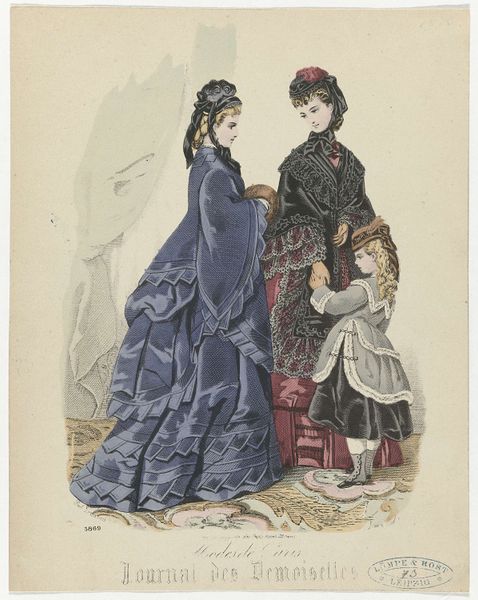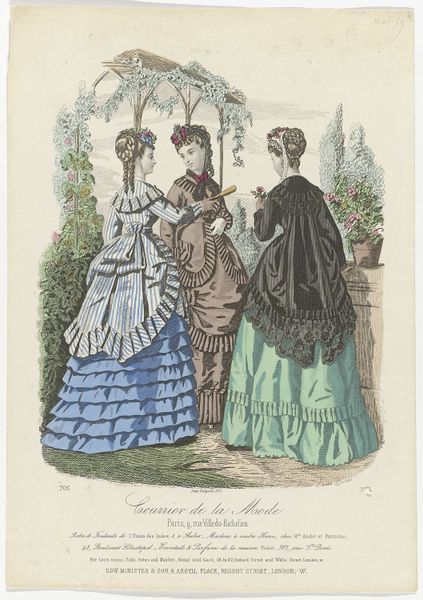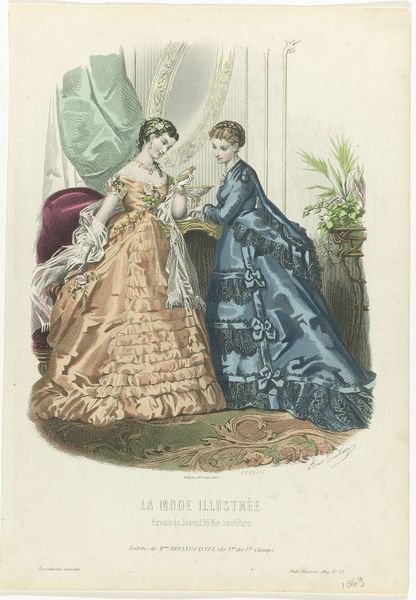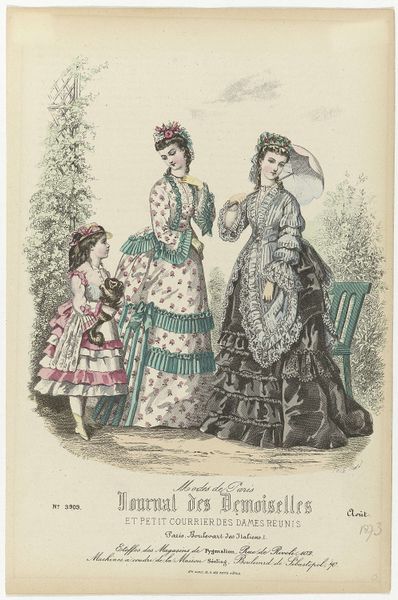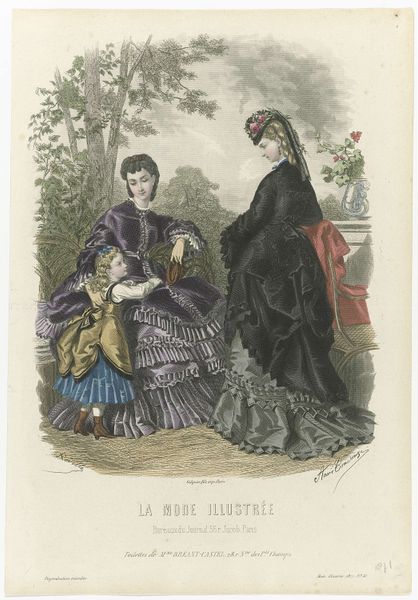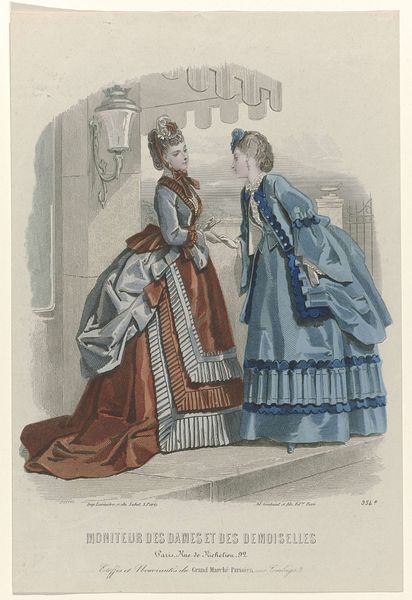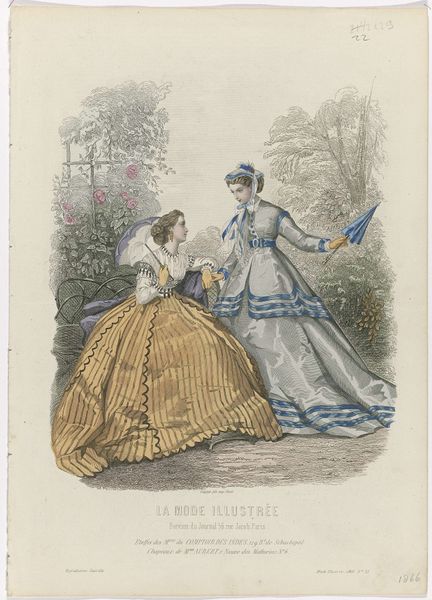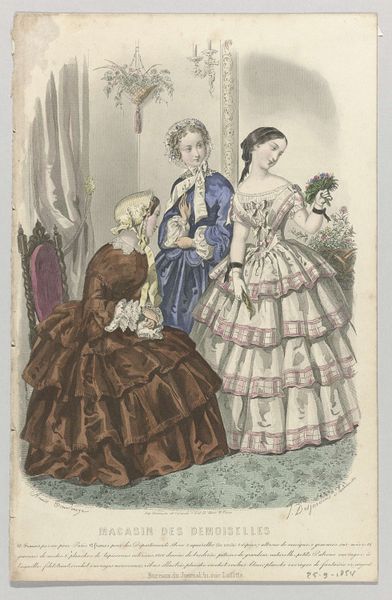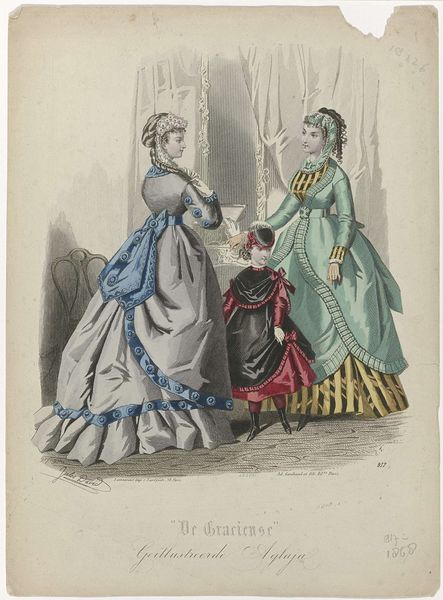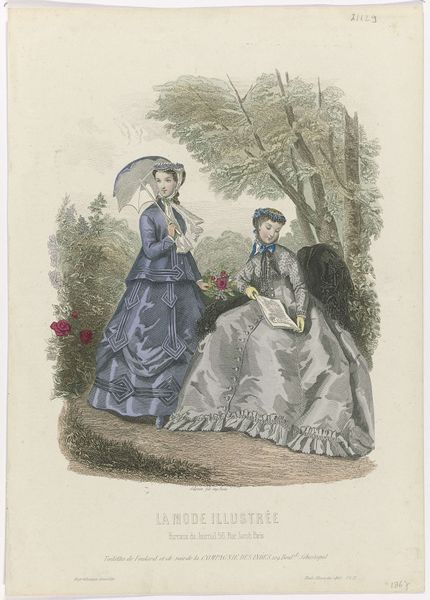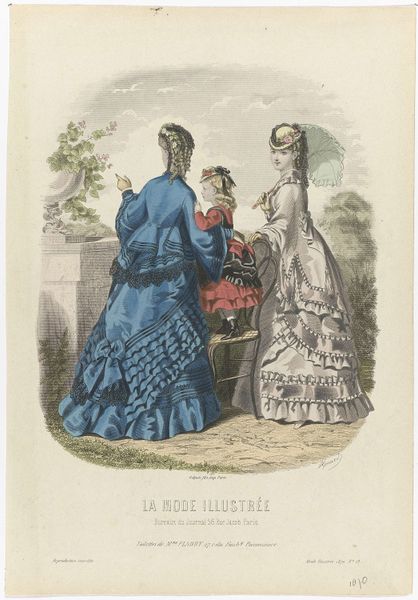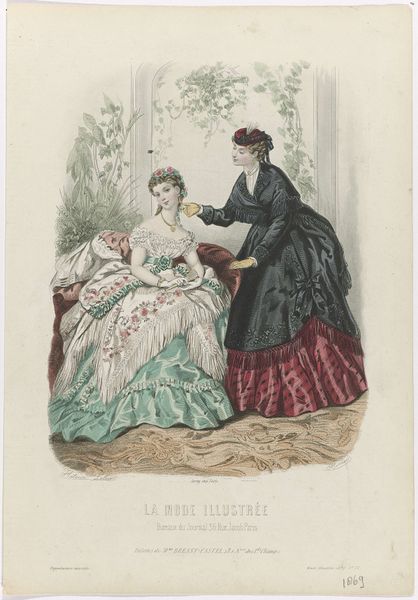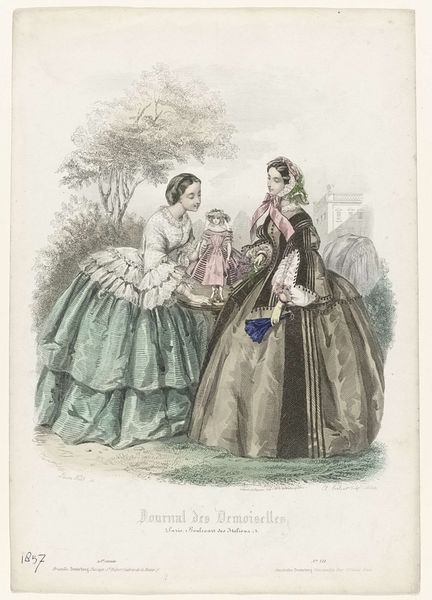
lithograph, print
#
portrait
#
lithograph
# print
#
figuration
#
traditional art medium
#
watercolour illustration
#
genre-painting
#
dress
#
watercolor
Dimensions: height 367 mm, width 252 mm
Copyright: Rijks Museum: Open Domain
Editor: So, this print is titled "La Mode Illustrée, 1871, No. 21" by J. Bonnard. It seems to be a lithograph. What really strikes me are the intricate dresses; you can almost feel the layers of fabric. What do you see in this piece? Curator: Well, considering the print's materiality – lithography – we can think about how this reproductive technology democratized fashion. It allowed for wider circulation of trends, influencing production and consumption of textiles and clothing. What were these dresses actually made of? Who were the laborers involved in creating these garments and this very image? Editor: That's fascinating! I hadn’t considered the industrial aspect. It’s easy to just see them as pretty dresses. Curator: Exactly. But focusing on materiality shifts the emphasis. Look closely – are those mass-produced fabrics, or bespoke designs? Also, how does the lithographic process, with its inherent limitations and reproducible qualities, affect the value and perception of fashion? Editor: I guess it makes high fashion more accessible as an ideal, even if the actual clothes remained out of reach for most. So, this image becomes part of the cycle of desire and consumption. Curator: Precisely. And how does that impact social hierarchies and the very definition of "high art" versus "craft?" Editor: Wow, that completely reframes how I see fashion plates. It’s not just about the surface anymore; it's about the whole system. Curator: Indeed. Examining the material conditions behind even the seemingly frivolous reveals complex social and economic relationships.
Comments
No comments
Be the first to comment and join the conversation on the ultimate creative platform.
